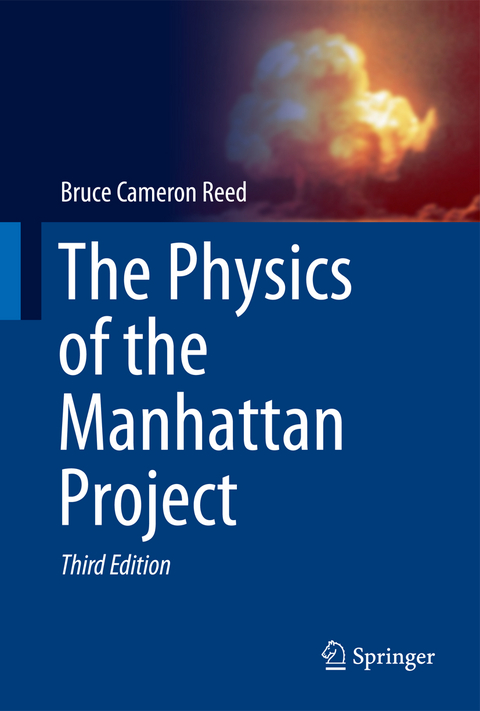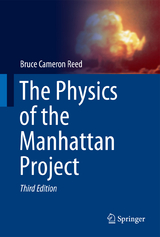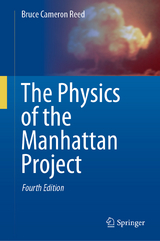The Physics of the Manhattan Project
Springer Berlin (Verlag)
978-3-662-43532-8 (ISBN)
- Titel erscheint in neuer Auflage
- Artikel merken
Cameron Reed is the Charles A. Dana Professor of Physics at Alma College, where he has been a faculty member since 1992. His teaching experience includes the full spectrum of undergraduate physics classes from freshman-level mechanics to senior-level quantum mechanics. His research interests address primarily the history and physics of nuclear weapons; in 2009 he was elected as a Fellow of the American Physical Society for his contributions to the history and physics of the Manhattan Project. He has also worked extensively on galactic structure (hot, blue stars). In addition to the present book, he has published two textbooks and over 100 papers in peer-reviewed physics and astronomy journals.
Preface.- Energy Release in Nuclear Reactions, Neutrons, Fission, and Characteristics of Fission.- Critical Mass and Efficiency.- Producing Fissile Material.- Complicating Factors.- Miscellaneous Calculations.- Appendices.- Appendix A: Selected.- Values and Fission Barriers.- Appendix B: Densities, Cross-Sections and Secondary Neutron Numbers.- Appendix C: Energy and Momentum Conservation in a Two-Body Collision.- Appendix D: Energy and Momentum Conservation in a Two-Body Collision That Produces a Gamma-Ray.- Appendix E: Formal Derivation of the Bohr-Wheeler Spontaneous Fission Limit.- Appendix F:Average Neutron Escape Probability From Within a Sphere.- Appendix G: The Neutron Diffusion Equation.- Appendix H: Questions, Answers.- Appendix I: Further Reading.- Appendix J: Useful Constants and Conversion Factors.
| Erscheint lt. Verlag | 8.9.2014 |
|---|---|
| Zusatzinfo | XVII, 222 p. 70 illus. |
| Verlagsort | Berlin |
| Sprache | englisch |
| Original-Titel | The Physics of the Manhattan Project |
| Maße | 155 x 235 mm |
| Gewicht | 533 g |
| Themenwelt | Naturwissenschaften ► Physik / Astronomie ► Atom- / Kern- / Molekularphysik |
| Schlagworte | Calculate Critical Mass Bomb • History of the Atomic Bomb • Manhattan Project • Manhattan Project Calculations • Manhattan-Projekt • nuclear fission • Nuclear Research in the Forties • nuclear weapons • Oppenheimer Physics • Physics of Fission Weapons • Wartime Physics at Los Alamos |
| ISBN-10 | 3-662-43532-2 / 3662435322 |
| ISBN-13 | 978-3-662-43532-8 / 9783662435328 |
| Zustand | Neuware |
| Haben Sie eine Frage zum Produkt? |
aus dem Bereich





